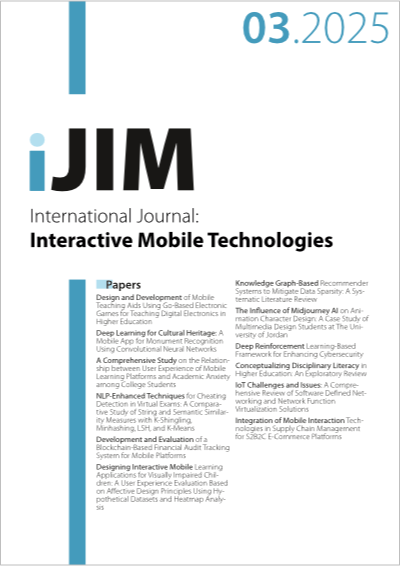Deep Reinforcement Learning-Based Framework for Enhancing Cybersecurity
DOI:
https://doi.org/10.3991/ijim.v19i03.50727Keywords:
IoT, Deep reinforcement learning, Cybersecurity, Network security, Machine learningAbstract
The detection of cyberattacks has been increasingly emphasized in recent years, focusing on both infrastructure and people. Conventional security measures such as intrusion detection, firewalls, and encryption are insufficient in protecting cyber systems against growing and changing threats. In order to address this problem, scholars have explored reinforcement learning (i.e., RL) as a potential solution for intricate cybersecurity decision-making difficulties. Nevertheless, the use of RL faces several obstacles, including dynamic attack scenarios, insufficient training data, and the challenge of replicating real-world complexities. This study presents a novel framework that uses deep reinforcement learning (i.e., DRL) to simulate harmful cyberattacks and improve cybersecurity. This study presents an agent-based framework that is capable of ongoing learning and adaptation in a dynamic network security environment. The agent determines the optimal course of action by considering the current state of the network and the rewards it receives for its decisions. The CIC-IDS-2018 database, constructed using Python 3.7 programming, was used. The conducted studies yielded outstanding results, with a detection accuracy of 98.82% achieved for the CIC-IDS-2018 database in cyberattack classification.
Downloads
Published
How to Cite
Issue
Section
License
Copyright (c) 2024 Malek M. Al-Nawashi, Obaida M. Al-hazaimeh, Tahat M. Nedal, Nasr Gharaibeh , Waleed A. Abu-Ain , Tarik Abu-Ain

This work is licensed under a Creative Commons Attribution 4.0 International License.



